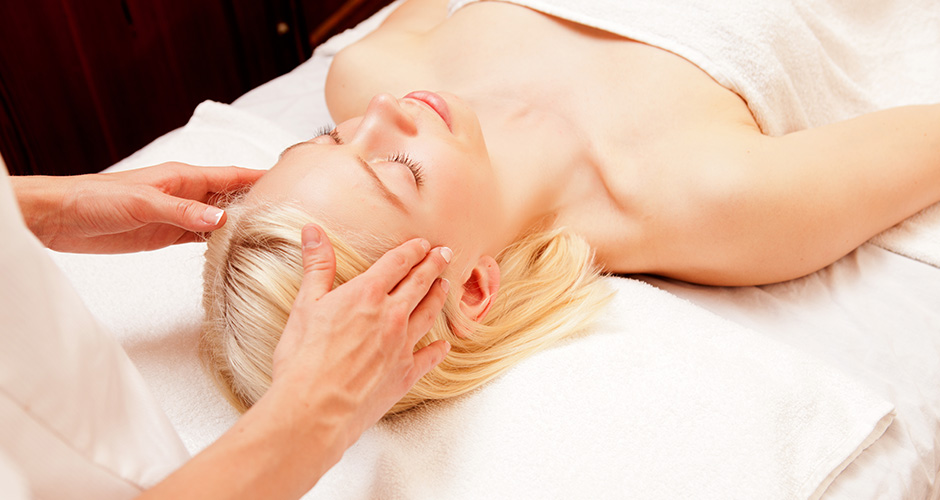In a world where stress is a constant, there will always be a need for relaxing outlets. In fact, Psychology Today suggests the rising interest in self-care has become more than just a trend. Our society is becoming more open to discussions about the link between mental health and physical wellness, creating opportunities for entrepreneurs like you to find your niche and fulfill a mounting need.
Though some think of a day at the spa as a simple indulgence, many consider it a mental and physical necessity. In 2015, the market size of the global wellness industry had grown to more than $3.7 trillion. In the United States, annual revenue in the spa industry has risen for 8 consecutive years and over half a million people in the U.S. visit spas every day.
Owning a spa is an amazing opportunity but it can also be quite challenging. Preparation is the key to success in any business venture, especially in an industry where there is so much competition.
Here are the steps you need to follow to be successful in running a spa:
- Step 1: Determine your target audience
- Step 2: Create a strong business plan
- Step 3: Find the perfect location
- Step 4: Secure the necessary financing
- Step 5: Cultivate an unforgettable customer experience
- Step 6: Invest in quality staffing
- Step 7: Listen to your customers and keep growing
Success isn’t something you can achieve overnight. You have to put in a lot of time and hard work even before you open your doors. Read on to learn what you need to do each step of the way to start your spa off on the right foot and to be successful in the business.
Step 1: Determine your target audience

When you’re ready to take the first step toward opening a spa, it’s easy to get caught up in the excitement. Before you jump right into brainstorming names and choosing a location, however, you need to think about some of the most basic details that will have the biggest impact on your business.
First and foremost, think about your target audience – what kind of customer you want to attract.
The spa industry is extremely competitive, so you may want to specialize in some way to help your spa stand out. Take a look at the spas that already operate in your area to see if there’s a void you can step into or, if you specialize in a certain type of service, think about building your business around that.
It’s important to have a target audience in mind when drawing up your business plan, but don’t limit yourself to a small subsection of the community.
Do some research to learn the demographics of the people who make up your community including their average annual income (especially their disposable income) as well as age range and marital status. Start building a mental image of who these people are and keep that image in mind when making decisions about your business.
Step 2: Create a strong business plan

Once you have an idea who will be walking through the doors of your spa, it’s time to get down to the nitty gritty details of what that spa is going to look like. It’s time to work on your business plan.
The technical definition of a business plan involves describing the nature of the business along with sales and marketing strategies, financial background, and projected profits and losses. What it really comes down to, however, is creating a roadmap to guide you along the way to starting, maintaining and growing your spa. You won’t be able to plan every single detail ahead of opening, but the more you think about the various aspects of starting and running a business, the better off you’ll be.
Here are the essential components of a business plan:
- Executive Summary: This is a general summary paragraph that describes what your spa is and how it differentiates from the competition.
- Description of the Business: Here you’ll describe the specifics of the spa, going into more detail on how it operates.
- Description of Services and/or Products: This section will outline your spa menu and products. When creating your menu, be sure to think about how clients can continue to see results at home with products you sell.
- Market Analysis: What does the general spa/beauty industry look like and where is it headed? Look up statistics and trends to help shape your business decisions now and in the future.
- Competitive Analysis: Go online and look for spas in your area. What are they doing right? What are they doing wrong? Reviews on their Yelp and Google Business pages will help you see the real picture of what your competition is doing that you could capitalize on.
- Operations and Management: Here you’ll go into detail on how the day-to-day operations will look like. When will you open? What employees will be needed to run the spa?
- Financial Components: Finances are key in any business and it’s important to be as detailed as possible when tracking. Use this section to discuss all of the different financial components necessary for both starting and running your spa.
For your own purposes, the business plan may be more a conglomeration of ideas and miscellaneous details. When it comes time to secure financing, however, you’ll need to be able to present an organized document. You may not have everything you need to fill in all the components listed above right now, but it’s a good idea to start assembling the details early on in the process.
As you start working on your business plan, here are some detailed questions to ask yourself:
- What kind of services do you plan to offer?
- Will your spa offer hair and makeup services in addition to skin and body care?
- Do you plan to offer services that require special equipment like hydrotherapy or light- based skin rejuvenating services such as IPL?
- What essential equipment will you need to purchase to open the business?
- What hours of operation will work best to accommodate the needs of your target audience?
- What kind of products will you sell in addition to offering spa services?
- How do you plan to advertise and market your business?
Again, you may not be able to answer all of these questions upfront. As you work through the list, however, you’ll find that the answer to one question leads you to another. If you follow the trail, you’ll eventually start to build a comprehensive picture of your future spa and a detailed business plan.
Step 3: Find the perfect location

Hopefully you already have an idea where you hope to open your business by this point, but the next step is finding the perfect space for your spa. If you’re not already familiar with the area, you may want to consider hiring a real estate broker who can help you find properties that fit your needs.
When shopping around for a good location, be sure to consider more than just the curb appeal and the interior of the space itself. Think about things like accessibility by public transit, parking, outdoor lighting, proximity to neighboring businesses, and the like. Your real estate broker will be able to provide insight into emerging trends in the area and answer general questions as well.
This is also a good time to review the Competitive Analysis section of your business plan to see who and where your competitors are located. There’s a lot of risk choosing a location for your spa that’s a block away from another.
Once you’ve narrowed down your options to a particular neighborhood, you can start considering individual properties. Here are some things to think about:
- Overall square footage
- Reception area and retail space
- Employee and client restrooms
- Space for administrative offices
- Layout for consultation and treatment rooms
If you’re extremely lucky, you may have the opportunity to take over a space that has been used for a similar purpose (even other beauty or wellness businesses might work). In most cases, however, you’ll find yourself enlisting the help of an interior designer and/or architect to design and customize the space according to your needs.
Be sure to consider all zoning regulations and local, state, and federal requirements regarding things like accessibility, restrooms, and space for employees.
Step 4: Secure the necessary financing

Opening a business can be expensive, no matter what kind of business it is. When it comes to starting a spa, you have to consider the cost of equipment as well as the supplies needed to complete services. You’ll need capital to secure a lease and to perform the necessary renovations, in addition to covering the cost to hire your staff and promote your business.
In most cases, your starting capital will come from a combination of sources. You may need to rely on personal savings and loans, even support from family and friends to be able to secure a business loan or some other type of funding.
Small businesses can obtain capital from a variety of places but the Small Business Administration (SBA) is a great place to start reviewing your options. Programs like Lender Match make it easier for small businesses to secure funding and some lenders even have programs specifically for spas and salons.
Step 5: Cultivate an unforgettable customer experience

When it comes to opening and running a spa, it all comes down to the details. As a business owner, you’re privy to all of the details on both sides of the counter but whether you succeed or fail comes down to the details your customer experiences. Those details determine whether that customer will come back.
To set your spa apart and to keep customers coming through your door, you need to create a unique and unforgettable customer experience.
Customer experience starts before your clients even walk through the door. Everything from your logo and website to your spa location affects the impression potential clients start to form and then build on when they actually come in to receive services. The secret to creating a positive customer experience is to build a clear and consistent image of your brand. When a client walks out of your business, they should be able to answer the without hesitation if a friend asks about your spa.
Here are some of the things that impact customer experience:
- A website that is both visually appealing and easy to navigate
- An identifiable logo that is unique and relevant to the business but not overly complicated
- Personal details and interaction at all points in the process (from booking to requesting feedback after the visit)
- A clean, attractive space that sets the right tone and atmosphere
- Convenient considerations like storage lockers for personal belongings
- Details that make the experience relaxing and private (soundproofing, dimmable lighting, etc.)
- Friendly, knowledgeable, and experienced staff who meet customer needs
- A spa menu that works for all different types of skin
Remember, your knowledge of the business will color your interpretation of customer experience. Make sure to bring friends and family in before you open your doors to customers so you can get some feedback about things that work well and areas for improvement.
Step 6: Invest in good staff and train them well

Repeat customers are the backbone of any successful business, but your staff play an important role in encouraging first-time customers to return. You can’t be everywhere at once, so you have to rely on your staff to be the face of your business and to create the best customer experience possible.
Finding the best employees for your business can be tough. You want to make sure your employees possess a wide range of skills with the necessary knowledge and experience, but you should take additional factors into account as well. Temperament and personality are more important than you may realize, especially in a spa where customers come to relax. You want staff members who can connect with customers, anticipate their needs, and make them feel comfortable.
Though finding good employees is important, how you train them matters just as much.
Training is when you give your staff the tools they need to bring your vision to life. It’s an investment in your business and in your community. Keep in mind as well that the spa industry has a high turnover rate. Making sure your staff have the training and support they need at work may help reduce turnover which, in turn, will help you build a base of repeat customers who have a favorite therapist.
In addition to hiring your therapists and estheticians, consider the additional tasks you may need to hire help to complete such as:
- Booking and confirming appointments
- Ordering supplies and managing inventory
- Creating and revising work schedules
- Tracking and monitoring expenses
- Developing advertising and marketing strategies
- Hiring employees and training new staff
- Overseeing customer experience and troubleshooting issues
Don’t expect to do all of the training yourself. You might be able to when you first open, but as your business becomes more successful and you start to expand, you’ll need to delegate.
Step 7: Listen to your customers and keep growing

No business can be successful without customers. As a spa owner, it’s in your best interest to keep your customers’ interests in mind. Accept feedback (even criticism) with an open mind and look for opportunities to expand your business and your customer base.
At the end of the day, you are in control of your business and its success or failure rests in your hands. Follow these steps to start your business with the best chance of success and invest in your customers, your staff, and yourself along the way to keep your feet pointed in the right direction.

